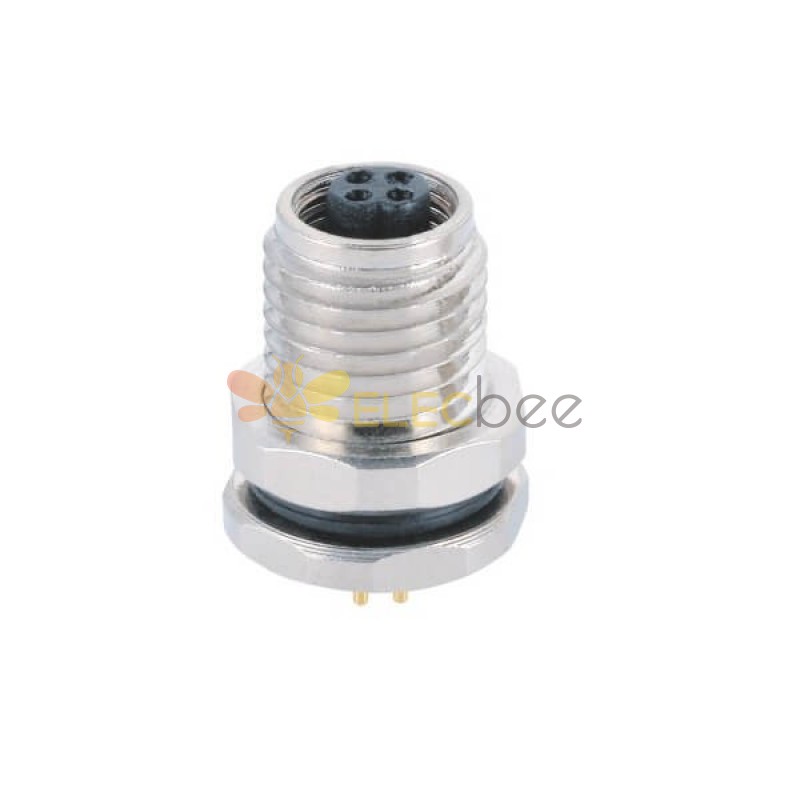How do you install an M5 connector?

When it comes to industrial and automation applications, the quality of your connections is critical to the success of your project. Installing an M5 connector correctly can help ensure that your connection is secure, reliable, and long-lasting. In this article, we will walk you through the steps for installing an M5 connector for the best results.

Step 1: Prepare the Cable
Before you begin installing the M5 connector, you will need to prepare the cable that you will be connecting. This involves stripping the cable to the correct length and exposing the wires. To ensure a reliable connection, it is important to follow the manufacturer’s guidelines for cable preparation.
Step 2: Install the Cable into the Connector
Once the cable is prepared, you can install it into the connector. Most M5 connectors have a retention mechanism that holds the cable in place, so you will need to insert the cable into the connector and secure it according to the manufacturer’s instructions.
Step 3: Connect the Contact Pins
Next, you will need to connect the contact pins. This involves inserting the pins into the connector housing and securing them in place. It is important to follow the manufacturer’s guidelines for pin placement and orientation to ensure a secure and reliable connection.
Step 4: Seal the Connection
To protect the connection from dust, debris, and other environmental factors, you will need to seal the connector. This can be done by installing a protective cap or dust cover over the connector.
Step 5: Test the Connection
Once the M5 connector is installed and sealed, you will want to test the connection to make sure it is secure and reliable. This can be done by performing a continuity test with a multimeter to ensure that there is a good connection between the pins.
In conclusion, installing an m5 connector is a simple process that requires careful preparation and attention to detail. By following the steps outlined in this article, you can ensure that your M5 connector is installed correctly and that your connections are secure, reliable, and long-lasting.
Extended Reading
What is an M5 connector?
M5 connectors are widely used in industrial automation and other applications where a reliable and secure connection is required. But what exactly is an M5 connector, and what makes it different from other types of connectors? This article will provide a comprehensive overview of M5 connectors, including their design, features, and applications.
First and foremost, M5 connectors are a type of circular connector that is characterized by their small size. The M5 designation refers to the outer diameter of the connector, which is 5mm. This compact size makes M5 connectors ideal for applications where space is limited, such as in tight spaces or where multiple connections are required in a small area.
One of the key benefits of M5 connectors is their versatility. They are available in a variety of configurations, including single- and multi-pin options, male and female connectors, and various cable lengths and diameters. This versatility makes it easy to find an M5 connector that meets the specific requirements of your application.
Another important feature of M5 connectors is their high level of electrical performance. They have low contact resistance and high insulation resistance, which ensures a stable and reliable connection. M5 connectors also have a high current rating, making them suitable for power-intensive applications.
This ensures that the connector will perform reliably and last for a long time, even in challenging environments. They are also compatible with a variety of cables, adapters, and accessories, making them a flexible and customizable solutions for various applications.
In conclusion, M5 connectors are a small, versatile, and reliable solution for industrial and automation applications.
What are the applications of M5 connectors?
One of the primary applications of M5 connectors is sensor and actuator connections. These connectors provide a secure and stable connection between sensors and control systems, which is essential for the accurate and efficient functioning of automated processes.
Another common use of M5 connectors is in data and signal transmission. These connectors provide reliable and fast transmission of data and signals between devices, making them ideal for applications such as industrial networking and control systems.
Their high current-carrying capacity and low contact resistance make them suitable for transmitting power to devices in industrial environments, such as lighting systems, pumps, and motors.
They provide a secure and stable connection between components, such as valves and actuators, which is essential for the safe and efficient functioning of these systems.
In conclusion, M5 connectors are a versatile and essential component in a wide range of industrial and automation applications. Their compact size, high-density design, and robust construction make them a reliable choice for applications requiring secure connections and efficient signal transmission. Whether you need to connect sensors, transmit data, or power devices, M5 connectors are an ideal solution for your needs.
What are the benefits of using M5 connectors?
M5 connectors are widely used in industrial and automation applications due to their numerous benefits. These connectors are known for their compact size, reliability, and versatility, making them an ideal choice for a variety of applications.
One of the biggest benefits of using M5 connectors is their compact size. With a diameter of just 5mm, these connectors are small and lightweight, making them ideal for applications where space is limited. The compact size also allows for multiple connections in a small area, which helps to maximize available space.
Another benefit of M5 connectors is their high level of reliability. These connectors are designed to withstand harsh environments and extreme conditions, including exposure to impact, vibration, and temperature fluctuations. This makes them ideal for use in challenging industrial applications.
M5 connectors are also known for their versatility. They are compatible with a wide range of cables, adapters, and accessories, making them flexible solutions for various applications. Additionally, they support a high current rating, which makes them suitable for power-intensive applications.
They have a low contact resistance and high insulation resistance, which ensures a stable and reliable connection.
Finally, M5 connectors are cost-effective and widely available, making them an accessible and affordable solution for many applications.
In conclusion, the benefits of using M5 connectors are numerous. With their compact size, reliability, versatility, high level of electrical performance, and cost-effectiveness, they are a great choice for industrial and automation applications.




